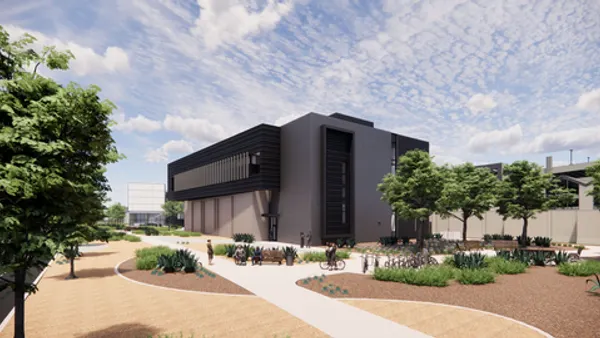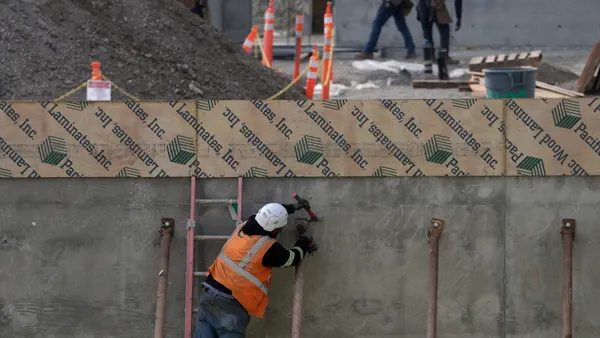Dive Brief:
- New York City-based construction technology-focused startup Toggle has created a digital production process to fabricate and assemble steel rebar using industrial robots.
- The full stack robotics and automation system, also called Toggle, can cut labor costs by 50% and increase productivity five times compared to traditional production and assembly methods, according to the company's website. It is designed for urban and civil infrastructure projects using poured-in-place as well as precast reinforced concrete products and can pre-tie cage sizes up to 25 feet in length.
- The Toggle system is currently engaged on projects including large-scale New York City civil infrastructure, commercial solar and energy storage, Toggle CEO and co-founder Daniel Blank told Construction Dive. He declined to give specifics about which projects they are. The company ships the products by truck within 300 miles of its Brooklyn factory.
Dive Insight:
Robots help alleviate the construction labor shortage and make jobsites safer by automating tasks that are cumbersome for humans. For instance, Toggle said its system makes the dangerous and time-consuming production of reinforced concrete faster and safer than traditional construction methods. Through a cooperative process, the robot picks up and manipulates the rebar, leaving humans to do the final wire tying.
The company is in the process of automating this step, according to The Architect's Newspaper, as well as planning to incorporate a linear track that would allow the robot to produce larger meshes.
Smaller, autonomous robots working together also can address the need for safe, inexpensive and automated construction, a new report claimed. This type of collective robotics, by which several robotic systems modify a shared environment, can help companies integrate design, construction and other controls, the report said.
By making their way into a variety of construction tasks, robots will change the way the industry operates. According to market intelligence firm Tractica, the largest market will be for robot assistants used on construction sites, followed by infrastructure robots for demolition, site prep and road building; structure robots such as bricklayers, welders and 3D concrete printers; and finishing robots, which perform tasks such as drilling, drywall installation, cleaning and painting.











